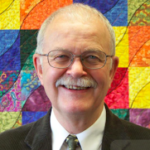The first Advent candle is the candle of hope. The stories of Mary and Elizabeth are about waiting and hoping in God’s promises. These are followed by stories about the hope of the magi who traveled a long journey and the shepherds who left their flocks to come to Bethlehem and see what God had done.
After Christmas we have the stories of Anna and Simeon, two elderly faithful ones who came to the temple in hope that they would see the Lord’s Christ. And of course there is tradition of making New Year’s resolutions in hope that in the New Year we’ll get it more right than in the old one. In so many ways, this is the season of hope.
For those of us living with mental illness, hope is an essential. We live in hope that one day we will recover that which mental illness has stolen from us. We rely on hope that when things don’t go well – my medication isn’t working, my therapist hasn’t called back, my check is late, and my rent is overdue– they will get better. We rely on hope to keep going, not to give up, to keep believing that recovery is possible.
It’s easy to say we need hope; it can be hard to find it. Hope is not something that we can control, not something that we can put in a drawer to take out whenever we need it. Sometimes it comes, and sometimes it doesn’t. As Emily Dickinson wrote, “hope is the thing with feathers”, like a bird it perches where it will. This is true; it’s also true that there is much we can do to make it more likely that hope will come to us.
In my new book, Recovery from Depression: Forty-Nine Helps, I write about preparing the way for hope, “the thing with feathers:”
I am a casual birder at best, but I do know enough to pick the right seeds to make it more likely that colorful birds will perch on my feeder. Ultimately they come or they don’t, but I do my part to make it more likely that they will. When they do, it’s wonderful. One memorable morning, I looked out and saw two indigo buntings perched on our feeder. Years later, I still get a thrill when I remember seeing them.
I have also learned there are things I can do to make it more likely that hope will come to me. I can hang out with people who make me feel more hopeful when I am around them. I encourage you to stay close to people who are bringers of hope in your own life. Sometimes all one needs to do is remember good times in the past, and hope will come. In its many forms, worship can be a time for hope to come. If you have a faith tradition, I encourage you to seek its words and images of hope and then draw as close to them as you can.
Anna and Simeon go to the temple; the magi and the shepherds come to Bethlehem; you and I can go to church, to a support group, or just hang out with good friends – put ourselves in places and with people where hope is more likely to come. And, like our ancestors of faith, we can remember God’s promises, remember blessings and good times in our own lives, remember all that which invites hope that the joy that was once ours will be ours again.
Mental illness tells us that we are incompetent to help others and to help ourselves. It tells us that things will only get worse, and that if we try to do anything about it, we’ll only make things get worse faster. In recovery we learn that mental illness has lied to us: we are capable and competent, able to do many things for others and ourselves. One of the things that we can do is make it more likely that hope will come to us. My New Year’s resolution is simply that I will do these things, and I invite you to make the same resolution.

Bob Griggs
Ordained in 1973, Bob Griggs has served UCC churches in Massachusetts, New Hampshire, and Minnesota. He is an Advisory Council member at Vail Place, a club house for people living with mental illness. He is also the author of A Pelican of the Wilderness: Depression, Psalms, Ministry, and Movies and Recovering from Depression: Forty-Nine Helps.
